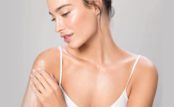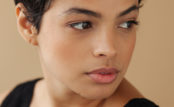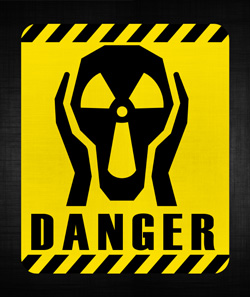 You might cringe when you read this. The Environmental Working Group estimates there are more than 10,000 nasty chemicals in beauty and skin care products. They range from carcinogens to pesticides and reproductive toxins. Yes, this affects you too – the average North American adult is exposed to 168 chemicals each day.Now consider that anything applied to the skin, be it antiperspirant or lip gloss, is absorbed by the body just as if you’d eaten it. Now most skin care products look don’t look so pretty, and natural skin care looks golden by comparison.So what does this mean? Well, you can start with a few easy fixes. Avoid antibacterial cleansers, for example, because they generally use two dangerous ingredients, triclosan and triclocarban. Studies show antibacterial cleansers don’t reduce bacteria or prevent disease any better than washing with soap. It’s a case of risk without reward. That’s not my cup of tea.You can – and should – read the ingredients of all the skin care products in your regimen too. Put them through the EWG’s cosmetics database to learn about the side effects linked to them, and for safer, often natural alternatives to common skin care products when possible.
You might cringe when you read this. The Environmental Working Group estimates there are more than 10,000 nasty chemicals in beauty and skin care products. They range from carcinogens to pesticides and reproductive toxins. Yes, this affects you too – the average North American adult is exposed to 168 chemicals each day.Now consider that anything applied to the skin, be it antiperspirant or lip gloss, is absorbed by the body just as if you’d eaten it. Now most skin care products look don’t look so pretty, and natural skin care looks golden by comparison.So what does this mean? Well, you can start with a few easy fixes. Avoid antibacterial cleansers, for example, because they generally use two dangerous ingredients, triclosan and triclocarban. Studies show antibacterial cleansers don’t reduce bacteria or prevent disease any better than washing with soap. It’s a case of risk without reward. That’s not my cup of tea.You can – and should – read the ingredients of all the skin care products in your regimen too. Put them through the EWG’s cosmetics database to learn about the side effects linked to them, and for safer, often natural alternatives to common skin care products when possible.
Dangerous Ingredients Within Skin Care Products: The Repeat Offenders
Most of the dangerous toxins in skin care products are too small in quantity to matter. Some of these toxins can have a large impact in small concentrations, though, and made worse by the fact that most consumers don’t question the ingredients in the products they use.The situation is of enough concern that the Center For Disease Control now monitors cosmetic ingredient levels in the bloodstream of random Americans. This, in an effort to guide general health discussions among North American consumers.Some of the worst ingredients and products include:Antibacterial Soaps and CleansersDon’t be misled by that reassuring description. Experts argue that most antibacterial soaps and cleansers provide no additional benefit than regular soap. Long-term use of antibacterial products may even lead to a rise in ‘super-bugs’, which could become resistant to these overhyped cleansers.Think about the environment too. Millions of pounds in antibacterial chemicals and other nasties from skin care products get flushed down the toilet and end up in waterways each year. They may harm algae and other aquatic life.
The concern with parabens is they act like estrogen in the body. The effect is weak, but a few studies have found parabens in tissue samples from breast cancer tumors.
In a recent check, 75% of adult and children’s urine tested positive for triclosan. That’s the most common chemical in antibacterial cleansers. While the levels were low, it’s potentially dangerous, and with no added benefit for using the product.Your Move: Avoid products with triclosan or triclocarban. You might even want to avoid ‘antibacterial’ products completely because some products don’t list these chemicals. Clean your hands and home surfaces with regular soap and water instead.PhthalatesPronounced ‘thal-ates’, these chemicals are commonly listed as ‘fragrance’ among skin care products. They’re everywhere – even in dust we intake while inside. Some phthalates act like hormones, with evidence suggesting they may lower sperm count in men. Phthalates might also affect genital development in the male fetus among pregnant women.Your Move: Buy ‘fragrance-free’ products where possible. Better yet, opt for skin care products with natural oils like citrus and lavendar.ParabensThese are chemicals widely used to preserve ingredients in cosmetics. They inhibit microbes, which protects against contamination from bacteria and fungi.Most skin care products, including cosmetics, moisturizers, hair products and even some drugs and foods have parabens.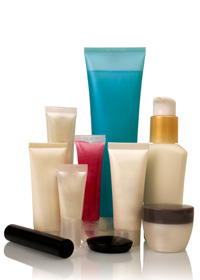 The concern with parabens is they act like estrogen in the body. The effect is weak, but a few studies have found parabens in tissue samples from breast cancer tumors.Our current understanding suggests that parabens are probably safe, but that’s far from conclusive. More studies are required, and parabens remain a source of contention for many consumersYour Move: Read the labels on skin care and other personal care products in your daily regimen. Parabens typically appear with ‘methyl’, ‘butyl’, or ‘propyl’ as a prefix. Watch for the word ‘paraben’ however it shows up, or buy paraben-free products if you’re especially concerned.MusksOften found in perfume and laundry detergents, most musk products are chemicals made in laboratories. In the 1990s, some synthetic musks showed potential build-up to toxic levels in the body. This caused tissue damage.Some companies have cut back on musk since then, but they’re still common in household products, including fabric softeners and laundry detergent, and personal care products like perfume. In this scenario, they may appear as ‘nitro’ or ‘polycyclic’ musk.Musks can also show up as Tonalid and Galaxolide. However, in some cases, they’re simply labelled ‘fragrance’.Your Move: Watch for the ingredients described above. Buy fragrance-free skin care products where possible, and note you can always write the manufacturer for a complete list of ingredients.
The concern with parabens is they act like estrogen in the body. The effect is weak, but a few studies have found parabens in tissue samples from breast cancer tumors.Our current understanding suggests that parabens are probably safe, but that’s far from conclusive. More studies are required, and parabens remain a source of contention for many consumersYour Move: Read the labels on skin care and other personal care products in your daily regimen. Parabens typically appear with ‘methyl’, ‘butyl’, or ‘propyl’ as a prefix. Watch for the word ‘paraben’ however it shows up, or buy paraben-free products if you’re especially concerned.MusksOften found in perfume and laundry detergents, most musk products are chemicals made in laboratories. In the 1990s, some synthetic musks showed potential build-up to toxic levels in the body. This caused tissue damage.Some companies have cut back on musk since then, but they’re still common in household products, including fabric softeners and laundry detergent, and personal care products like perfume. In this scenario, they may appear as ‘nitro’ or ‘polycyclic’ musk.Musks can also show up as Tonalid and Galaxolide. However, in some cases, they’re simply labelled ‘fragrance’.Your Move: Watch for the ingredients described above. Buy fragrance-free skin care products where possible, and note you can always write the manufacturer for a complete list of ingredients.
Audit Your Skin Care Products For ‘The Dirty Dozen’
Check your bathroom. Odds are good that you harbor parabens, musk and other toxins – a survey of Canadian consumers found a full 80% of tested cosmetics had at least one of these dirty dozen toxic ingredients:BHA and BHT – Often found in moisturizers, these may disrupt hormones. BHA is linked to cancer, and is harmful to fish and wildlife.Coal Tar Dyes – Ready for this? Watch for p-phenylenediamine in hair dyes and colors listed as ‘Cl’ and with a following five digit number. They’re common in hair dyes and linked to cancer and toxic effects to the brain. In the United States they’re also called ‘FD&C Blue No. 1’ or ‘Blue 1’.DEA Ingredients – Not the Drug Enforcement Agency, DEA ingredients are typically found in shampoo, moisturizers and related creamy or foaming products. These, and related chemicals TEA and MEA, can react to form nitrosamines. The latter may cause cancer, and are harmful to fish and wildlife.Dibutyl Phthalate – See anything familiar here? Dibutyl phthalate is common in nail products and is an endocrine disruptor. It can trigger reproduction issues too, and is bad for the environment.Formaldehyde-Releasing Preservatives – DMDM hydantoin, methenamine and quarternium-15, among others, release small amounts of formaldehyde, which can cause cancer. You’ll often find formaldehyde-releasing preservatives in cosmetics.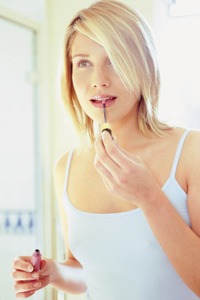 Parabens – You’re already familiar with parabens. They’re very common in skin care products. Some researchers believe they disrupt the endocrine system too.Parfum (Fragrance) – These can trigger asthma and allergies. Higher up the health risk scale, they might also lead to cancer and are neurotoxic. They’re no friends of the environment either.PEG Compounds – Often found in cosmetic creams, PEG compounds may contain 1,4 dioxane, which is linked to cancer. Watch for a related chemical, propylene glycol, and other ingredients with ‘eth’, like polyethylene glycol.Petrolatum – Found in hair products for shine, lip balm, lip stick and some moisturizers, petrolatum is a petroleum product that often has polycystic aromatic hydrocarbons. They might increase risk of cancer.Siloxanes – Ingredients ending with ‘siloxane’ or ‘methicone’ appear to disrupt the endocrine system. They may cause reproductive issues too, and like just about every ingredient on this list of dirty dozen ingredients, they’re bad for the fishies, otters, and the other cute, and a few not-so-cuddly marine organisms that make up the ecosystem.
Parabens – You’re already familiar with parabens. They’re very common in skin care products. Some researchers believe they disrupt the endocrine system too.Parfum (Fragrance) – These can trigger asthma and allergies. Higher up the health risk scale, they might also lead to cancer and are neurotoxic. They’re no friends of the environment either.PEG Compounds – Often found in cosmetic creams, PEG compounds may contain 1,4 dioxane, which is linked to cancer. Watch for a related chemical, propylene glycol, and other ingredients with ‘eth’, like polyethylene glycol.Petrolatum – Found in hair products for shine, lip balm, lip stick and some moisturizers, petrolatum is a petroleum product that often has polycystic aromatic hydrocarbons. They might increase risk of cancer.Siloxanes – Ingredients ending with ‘siloxane’ or ‘methicone’ appear to disrupt the endocrine system. They may cause reproductive issues too, and like just about every ingredient on this list of dirty dozen ingredients, they’re bad for the fishies, otters, and the other cute, and a few not-so-cuddly marine organisms that make up the ecosystem.
Sodium Laurel Sulfate may be contaminated with 1,4 dioxane, which might incease cancer risk. Note that other ingredients with ‘eth’ pose the same risks, like sodium laureth sulfate.
Sodium Laurel Sulfate – This is common in foaming cosmetics, like shampoos and bubble bath products. Sodium Laurel Sulfate may be contaminated with 1,4 dioxane, which might incease cancer risk. Note that other ingredients with ‘eth’ pose the same risks, like sodium laureth sulfate.Triclosan – We’ve already talked about this abundant chemical in antibacterial cleansers. You might also find it in toothpaste and antiperspirants.
How to Avoid Dangerous Ingredients in Skin Care Products
While it’s not always possible to avoid all these ingredients, you can at least minimize your exposure to them. Put them to the test – check the ingredients in the products you use each day. Test new products while you’re at it. The Environmental Working Group has an excellent database to vet ingredients and find alternative products where appropriate.Opt for natural skin care and beauty products too, if they’re within your means.
Three Awesome Skin Care Products
Launched three years ago, the Skinception line of skin care products blend natural ingredients with peptides that stimulate natural production of collagen. They’re hybrid products, blending natural skin care with the most recent developments in skin care science. Yet they might be of particular interest to you because Skinception products, unlike most drugstore creams, don’t have parabens or most of the ingredients discussed in this article.Skinception’s argan oil has none, and is undiluted argan, with youth-friendly antioxidants and 200% more vitamin E than found in olive oil.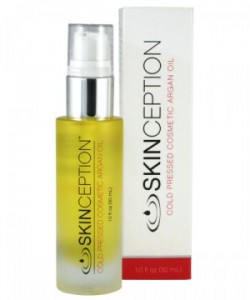 As a starting point, consider these three skin care products:Kollagen Intensiv: One of the most luxurious anti-wrinkle creams on the market, Kollagen Intensiv is a Swiss-derived formula with impressive results. The product is clinically proven to reduce the appearance of wrinkles by up to 354%. And guess what? There are no parabens in the formula, yippee!Eyelasticity Age-Defying Eye Therapy: A nifty little product for consumers who want to look younger, Eyelasticity takes years off the eyes, with less puffiness, bagging and reduced dark circles. Has anyone ever told you to put green tea bags over your eyes to bring youth to this tell-tale area? Tea bags have tannin, which encourages circulation and less inflammation – and there’s green tea extract in the Eyelasticity formula.Skinception Argan Oil: If you buy one product after reading this article, make it Skinception argan oil. You can use it to moisturize your skin, condition your hair and even strengthen your nails. It wears so many hats that you’ll save money by cutting down on other beauty products, and unlike Moroccan Oil, it’s undiluted. Natural skin care at its best.
As a starting point, consider these three skin care products:Kollagen Intensiv: One of the most luxurious anti-wrinkle creams on the market, Kollagen Intensiv is a Swiss-derived formula with impressive results. The product is clinically proven to reduce the appearance of wrinkles by up to 354%. And guess what? There are no parabens in the formula, yippee!Eyelasticity Age-Defying Eye Therapy: A nifty little product for consumers who want to look younger, Eyelasticity takes years off the eyes, with less puffiness, bagging and reduced dark circles. Has anyone ever told you to put green tea bags over your eyes to bring youth to this tell-tale area? Tea bags have tannin, which encourages circulation and less inflammation – and there’s green tea extract in the Eyelasticity formula.Skinception Argan Oil: If you buy one product after reading this article, make it Skinception argan oil. You can use it to moisturize your skin, condition your hair and even strengthen your nails. It wears so many hats that you’ll save money by cutting down on other beauty products, and unlike Moroccan Oil, it’s undiluted. Natural skin care at its best.



